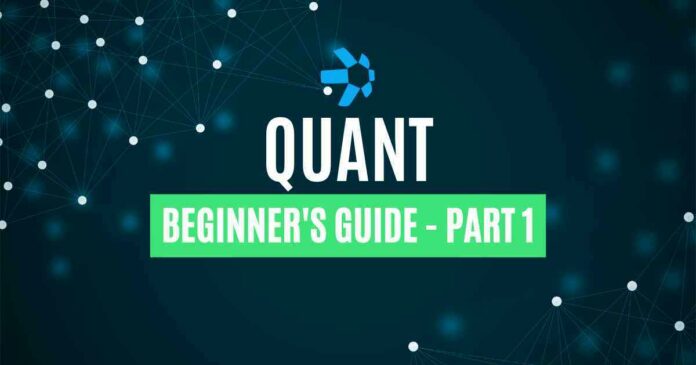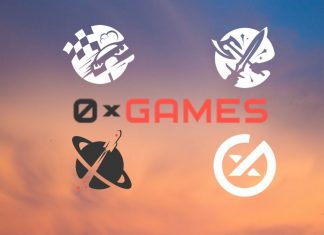Gilbert Verdian founded Quant Network in 2015 to create a fully interoperable blockchain environment.
In this two-part series, we take a closer look at Quant Network. In this first part, we examine some of the basics of the project.
What Is Quant Network?
Interoperability between blockchains has been one of the significant issues that stand in the way of crypto, NFTs, the metaverse, and all other applications of Web3 going mainstream. Most blockchains cannot operate or interact with each other, which essentially stalls technological progress. But Quant is different!
It is a blockchain operating system that connects different blockchain networks through its Overledger OS. The Overledger Operating System (OS) allows developers to build MApps, which can replace the existing dApps. MApps are fundamentally dApps that can store data and perform transactions on multiple blockchains synchronously. Overledger helps to eliminate the single-ledger dependency of dApps. It also allows dApps to tap into the strengths of different blockchains while overcoming the limitations that come along with them.
MAapps can exchange data between many distributed ledgers, facilitating cross-chain atomic swaps and multi-ledger tokens (MLTs). These functions interact through multi-chain smart contracts that can be leveraged on-chain and off-chain to allow for data exchange between different platforms.
$QNT is the native token of the Quant Network. It has many different uses inside the Quant ecosystem. Users can make payments using $QNT for utilizing network resources like APIs, data, and connections between various enterprise blockchains and legacy systems.
Gateway operators can use $QNT to pay the yearly licensing fees that enable them to use and participate in the Overledger Network. The Quant treasury system uses $QNT as payments to gateway operators who function as directors of transactional traffic within the broader Overledger Network.
Participation of Quant in Building CBDCs
Before we get into the role of Quant in building CBDCs, let us get a quick idea of what CBDCs are. Central Bank Digital Currencies are tokens released by the central bank of a particular country. CBDCs offer numerous benefits, such as fast and less costly transactions, enhanced financial inclusion, etc. Because of these reasons, many governments are considering launching CBCDs. Some governments want to present these tokens as the safest and most secure form of digital currency since it will allow governments to keep track of the flow of digital assets, which is not quite the case right now.
There are two types of CBCDs: wholesale and retail. Wholesale CBCDs are for financial institutions like banks, while retail CBCDs are to be used by consumers and businesses, which is similar to the case of physical currencies. Some countries and territories that have implemented CBCDs are:
- The Bahamas
- Antigua and Barbuda
- St. Kitts and Nevis
- Montserrat
- Dominica
- Saint Lucia
- St. Vincent and the Grenadines
- Grenada
- Nigeria
Quant Network on CBDCs
Quant published a research paper on the challenges the central banks will face while implementing CBCDs and proposed how the Quant Network can help tackle these issues. According to Quant, all CBCDs should have some basic requirements. The system must meet these conditions before it provides the flexibility to support a wide range of use cases reliably, securely, and at the scale necessary for national and international implementation. These requirements include:
- The two-tier model: Refers to the two types of CBCDs. The wholesale model by banks and other financial institutions. And the retail one for consumers, businesses, etc.
- Compatibility and process change: The banks and other existing financial institutions should not have to change their mode of operation drastically to adapt to CBCDs. Instead, the new systems must integrate with the existing ones.
- Usability: A CBCD must be usable on all kinds of transactions like person to person, person to merchant, business to consumer, government to citizen, etc.
- Rich data: The international standard for capturing rich data is ISO 20022.
- A platform for innovation: CBCDs must allow banks to innovate and implement new technologies in their systems.
- Openness: CBCDs must be open to using by diverse institutions, including banks.
- High performance and scale: A CBDC must scale in line with PSD2 and projected payment volumes and offer continuous availability without single points of failure.
- Privacy and security: CBCDs must not only meet existing security standards, but also improve and provide new features for secure transactions and banking.
Quant’s Blockchain Payments offering Multi-Ledger Token Solution (MLTS) provides a mechanism for meeting all the requirements of a CBDC described above. Private DLTs can use the system to issue tokens (stablecoins). It allows for the multiple ownership of these tokens, and the change of ownership is recorded on the original DLT.
B2B Payments and Quant
B2B payments are payments between two businesses. While B2C (business to customer) payments have instant finality, B2B payments may take days or weeks. The most commonly used B2B payments are paper checks, ACH payments, wire transfers, credit cards, and cash.
Many business enterprises are looking into blockchain-based payments as an alternative to traditional methods. The cost of real-time processing payments through blockchains is minimal compared to wiring funds. Also, compared to ACH payments, the waiting time is significantly lower. But the volatile nature of the crypto market can make the stakeholders hold their thoughts about implementing a blockchain-based system.
The Quant Network can also use its Multi-Ledger Token solution for making B2B payments. The MLT solution can convert any asset into stablecoins for a particular DLT – for example, a business enterprise. These funds are transferred to another DLT, say another business enterprise, which is allowed by the MLT protocol. Also, all these transactions are recorded throughout their entire life cycle. All these factors make Quant Network an ideal solution to produce fast and secure B2B payments.
How Do You Buy $QNT?
Traders can buy $QNT on major exchanges like Binance, Coinbase, Kucoin, Kraken etc. You can open an account on Binance and fulfill KYC requirements for most QNT liquidity. However, unfortunately, $QNT has limited volume in decentralized exchanges. You can find the complete list of marketplaces here.
To learn more about the Quant Network, read our Part 2 article in our two-part series.
⬆️ For more cryptocurrency news, check out the Altcoin Buzz YouTube channel.
⬆️ Our popular Altcoin Buzz Access group generates tons of alpha for our subscribers. And for a limited time, it’s Free. Click the link and join the conversation today.




























